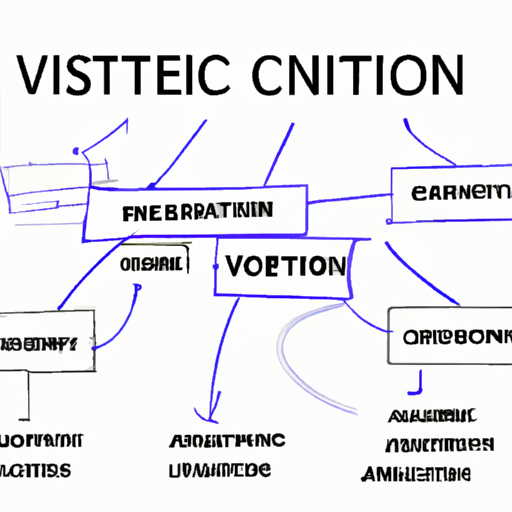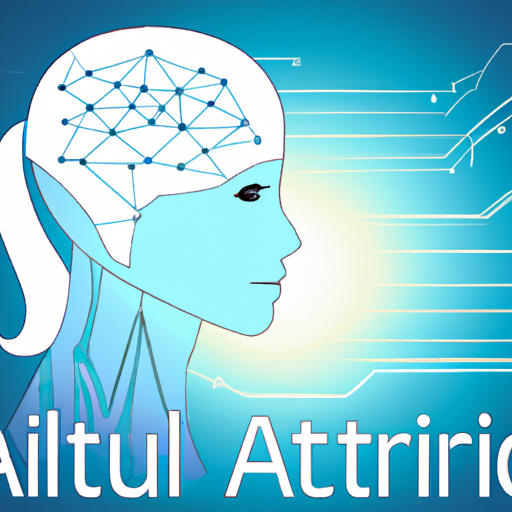-
Table of Contents
- Introduction
- The Future of Computer Vision: What’s Next?
- The Impact of Computer Vision on Security and Surveillance
- The Role of Machine Learning in Computer Vision
- The Benefits of Computer Vision in Automation and Robotics
- Exploring the Basics of Computer Vision: What is it and How Does it Work?
- Conclusion
“Unlock the power of sight with Computer Vision – See the world in a new way!”
Introduction
Computer vision is a field of artificial intelligence that deals with how computers can gain a high-level understanding from digital images or videos. It is a subfield of computer science that deals with the automated analysis of digital images and videos. Computer vision tasks include image recognition, object detection, object tracking, and image segmentation. Computer vision algorithms are used to detect and recognize objects, identify faces, and interpret the environment. Computer vision is used in a variety of applications, such as autonomous vehicles, medical imaging, robotics, and security systems.
The Future of Computer Vision: What’s Next?
The future of computer vision is an exciting prospect, with many potential applications and advancements on the horizon. Computer vision is a field of artificial intelligence that enables machines to interpret and understand the visual world. It is used in a variety of applications, from facial recognition to autonomous vehicles. As technology continues to evolve, computer vision is expected to become even more powerful and capable.
One of the most promising areas of computer vision is deep learning. Deep learning is a type of machine learning that uses artificial neural networks to identify patterns in data. This technology has already been used to create powerful image recognition systems, and it is expected to become even more powerful in the future. Deep learning can be used to create more accurate facial recognition systems, as well as to identify objects in images and videos.
Another area of computer vision that is expected to see significant growth is augmented reality. Augmented reality is a technology that overlays digital information onto the real world. This technology can be used to create immersive experiences, such as virtual tours or interactive games. Augmented reality can also be used to provide real-time information, such as directions or product information.
Computer vision is also expected to be used in the development of autonomous vehicles. Autonomous vehicles use computer vision to detect and identify objects in their environment, allowing them to navigate safely. This technology is expected to become even more advanced in the future, allowing autonomous vehicles to drive more safely and efficiently.
Finally, computer vision is expected to be used in medical applications. Computer vision can be used to detect and diagnose diseases, as well as to monitor patient health. This technology can also be used to create more accurate medical imaging systems, such as X-rays and CT scans.
The future of computer vision is an exciting prospect, with many potential applications and advancements on the horizon. As technology continues to evolve, computer vision is expected to become even more powerful and capable, allowing us to create more immersive experiences, safer autonomous vehicles, and more accurate medical imaging systems.
The Impact of Computer Vision on Security and Surveillance
Computer vision has had a significant impact on security and surveillance. This technology has enabled organizations to monitor their premises more effectively and efficiently. It has also enabled them to detect potential threats and respond to them quickly.
Computer vision is a form of artificial intelligence that enables computers to interpret and understand visual data. It is used to analyze images and videos to detect objects, identify patterns, and recognize faces. This technology has been used in a variety of applications, including security and surveillance.
Computer vision has enabled organizations to monitor their premises more effectively. It can be used to detect intruders, identify suspicious activity, and monitor the movements of people and vehicles. This technology can also be used to detect objects that are out of place or that have been left behind.
Computer vision has also enabled organizations to respond to potential threats more quickly. It can be used to detect weapons, explosives, and other dangerous items. This technology can also be used to identify individuals who may be a threat to the organization.
Computer vision has also enabled organizations to improve their surveillance systems. It can be used to detect objects that are out of place or that have been left behind. This technology can also be used to identify individuals who may be a threat to the organization.
Computer vision has had a significant impact on security and surveillance. It has enabled organizations to monitor their premises more effectively and efficiently. It has also enabled them to detect potential threats and respond to them quickly. This technology has revolutionized the way organizations protect their premises and personnel.
The Role of Machine Learning in Computer Vision
Machine learning has become an integral part of computer vision, a field of artificial intelligence that focuses on the development of algorithms that can interpret and understand digital images. Machine learning algorithms are used to identify patterns in digital images and to classify them into different categories.
Computer vision is a complex field that requires the use of sophisticated algorithms to interpret and understand digital images. Machine learning algorithms are used to automate the process of recognizing patterns in digital images. These algorithms are trained on large datasets of labeled images, which are used to teach the algorithm how to recognize certain patterns.
The use of machine learning algorithms in computer vision has enabled the development of a wide range of applications. For example, machine learning algorithms can be used to detect objects in digital images, such as faces, cars, and buildings. They can also be used to identify and classify objects in digital images, such as animals, plants, and people.
In addition, machine learning algorithms can be used to detect anomalies in digital images, such as blurred images or images with low contrast. They can also be used to detect and classify objects in digital images, such as cars, buildings, and people.
The use of machine learning algorithms in computer vision has enabled the development of a wide range of applications, from facial recognition to autonomous vehicles. Machine learning algorithms are also used to improve the accuracy of image recognition and classification tasks.
In conclusion, machine learning algorithms are an essential part of computer vision. They are used to automate the process of recognizing patterns in digital images and to improve the accuracy of image recognition and classification tasks. The use of machine learning algorithms in computer vision has enabled the development of a wide range of applications, from facial recognition to autonomous vehicles.
The Benefits of Computer Vision in Automation and Robotics
Computer vision is a rapidly growing field of technology that has the potential to revolutionize automation and robotics. Computer vision is the ability of a computer to interpret and understand visual information from digital images or videos. It is a form of artificial intelligence that enables machines to recognize objects, identify patterns, and make decisions based on visual data.
Computer vision has a wide range of applications in automation and robotics. It can be used to automate processes such as object recognition, navigation, and manipulation. For example, computer vision can be used to identify objects in a scene and then direct a robot to pick them up and place them in a specific location. This type of automation can significantly reduce the amount of time and effort required to complete a task.
Computer vision can also be used to improve the accuracy and efficiency of robotic systems. By using computer vision, robots can be programmed to recognize objects and navigate around obstacles with greater precision. This can help robots to complete tasks more quickly and accurately, reducing the risk of errors and increasing productivity.
Computer vision can also be used to improve safety in automation and robotics. By using computer vision, robots can be programmed to detect potential hazards and take appropriate action to avoid them. This can help to reduce the risk of accidents and injuries in the workplace.
Overall, computer vision has a wide range of potential applications in automation and robotics. It can be used to automate processes, improve accuracy and efficiency, and improve safety. By leveraging the power of computer vision, businesses can reduce costs, increase productivity, and improve safety in their operations.
Exploring the Basics of Computer Vision: What is it and How Does it Work?
Computer vision is a field of artificial intelligence that enables machines to interpret and understand the visual world. It is a rapidly growing field of research that has seen tremendous advances in recent years, and is now being used in a wide range of applications, from self-driving cars to facial recognition systems.
At its core, computer vision is the process of using algorithms to extract meaningful information from digital images or videos. This is done by analyzing the visual content of the image or video and extracting features such as shapes, colors, and textures. The extracted features are then used to identify objects, recognize patterns, and make decisions.
Computer vision algorithms can be divided into two main categories: supervised and unsupervised learning. Supervised learning algorithms are trained on labeled data, meaning that the algorithm is given a set of images with known labels. The algorithm then learns to recognize the labels by analyzing the images. Unsupervised learning algorithms, on the other hand, are not given any labels and instead must learn to recognize patterns in the data on their own.
Once the computer vision algorithm has been trained, it can be used to analyze new images or videos. This is done by feeding the image or video into the algorithm and having it identify objects or patterns. The algorithm can then be used to make decisions based on the identified objects or patterns. For example, a self-driving car could use computer vision to identify objects in its environment and make decisions about how to navigate around them.
Computer vision is an incredibly powerful tool that has the potential to revolutionize many industries. It is already being used in a wide range of applications, from facial recognition systems to medical imaging, and its potential is only beginning to be explored.
Conclusion
Computer vision is a rapidly growing field of research that has the potential to revolutionize the way we interact with the world. It has the potential to enable machines to understand and interact with their environment in a more natural way. Computer vision has already been used to create autonomous vehicles, facial recognition systems, and medical imaging systems. As the technology continues to develop, it will open up new possibilities for applications in a variety of fields.



